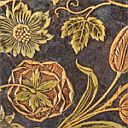0251 La guerre des brevets : histoire et produits de la manufacture de papiers peints Paul Balin
Identifiers (Article)
Identifiers (Files)
Abstract
Paul Balin, the head of one of the most famous French wallpaper manufactories from the second half of the 19th century, championed historicism in the wallpaper domain. Having taken over the Genoux manufacture in 1863, he was awarded at the 1867 Paris World Exhibition and again in Vienna in 1873. His relentless endeavor to improve the embossing process, the use of metallic finishes and the imitations of textiles had led him to file up to 15 patents between 1866 and 1884. His manufacturing processes were exclusively pre-industrial methods, executed by hand. A stubborn and fierce competitor, he brought infringement lawsuits against the whole profession from 1876 until at least 1885. Several European museums keep his productions, among which three collections have been acquired directly after his Grand diplôme d’honneur award in Vienna.
Statistics





